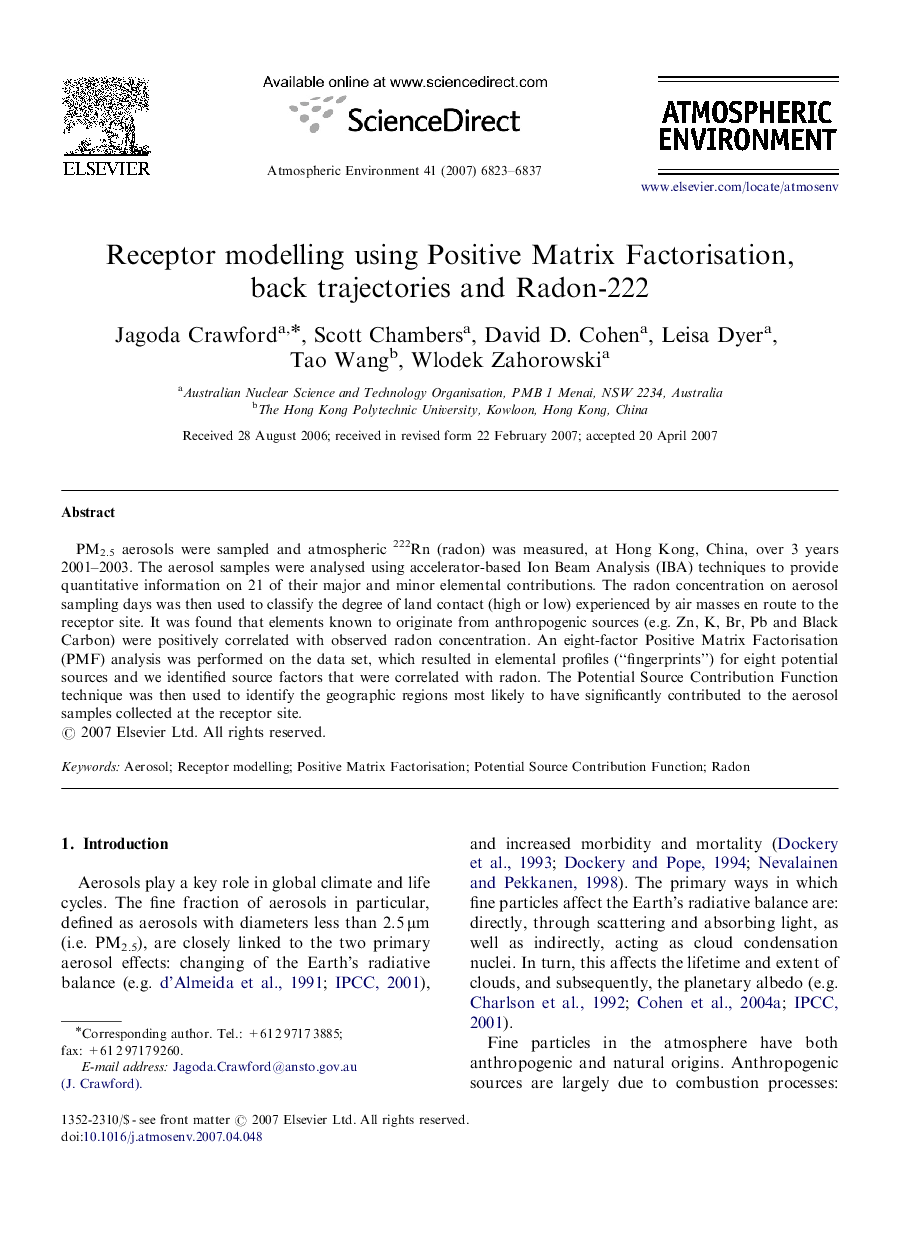| Article ID | Journal | Published Year | Pages | File Type |
|---|---|---|---|---|
| 4442344 | Atmospheric Environment | 2007 | 15 Pages |
PM2.5 aerosols were sampled and atmospheric 222Rn (radon) was measured, at Hong Kong, China, over 3 years 2001–2003. The aerosol samples were analysed using accelerator-based Ion Beam Analysis (IBA) techniques to provide quantitative information on 21 of their major and minor elemental contributions. The radon concentration on aerosol sampling days was then used to classify the degree of land contact (high or low) experienced by air masses en route to the receptor site. It was found that elements known to originate from anthropogenic sources (e.g. Zn, K, Br, Pb and Black Carbon) were positively correlated with observed radon concentration. An eight-factor Positive Matrix Factorisation (PMF) analysis was performed on the data set, which resulted in elemental profiles (“fingerprints”) for eight potential sources and we identified source factors that were correlated with radon. The Potential Source Contribution Function technique was then used to identify the geographic regions most likely to have significantly contributed to the aerosol samples collected at the receptor site.
